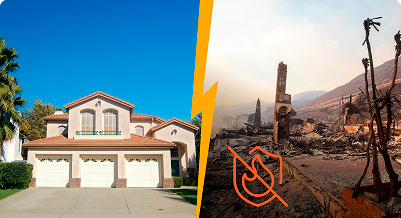Case Study: water damage mitigation following a tornado in Houston, Texas
GF Leads, 10 December, 2024
Overview
A small town outside Houston, Texas, experienced severe tornado damage that left multiple homes with compromised roofs and siding. As rain poured in through the damaged structures, interiors were flooded, leading to water-damaged insulation, drywall, and flooring. This case study highlights the impact of a skilled independent adjuster and a dedicated water mitigation team in securing comprehensive insurance coverage and restoring the affected homes.
Challenges
In the initial stages, insurance adjusters offered limited payouts, focusing only on visible roof and siding damage. These preliminary assessments overlooked extensive water damage within the walls, insulation, and floors. Without full coverage, homeowners faced significant repair costs out of pocket, and untreated water damage posed risks of mold growth and long-term structural issues.
-
Risk of Mold Growth: The presence of trapped moisture in insulation and drywall created an ideal environment for mold, which can develop within 48 hours, posing health risks and potentially increasing repair costs.
-
Structural Compromise: Left untreated, water damage could lead to rot in wooden structural components, weakening the home’s stability.
Solution
Referred by a local roofing company, an experienced independent adjuster joined the case to advocate for a thorough reassessment of all water damage. Working closely with water damage mitigation experts, the adjuster ensured that every affected area was documented and addressed:
-
Comprehensive Damage Documentation: The independent adjuster collaborated with the mitigation team to inspect and document water damage in hidden areas, such as attics, interior walls, and flooring layers. High-resolution photos and detailed reports highlighted water-saturated insulation, mold-prone areas, and moisture pockets within structural elements.
-
Advanced Drying Techniques: Industrial-grade dehumidifiers, air movers, and heaters were strategically placed to expedite drying in walls, floors, and attic spaces. This process minimized further water infiltration and potential structural deterioration.
-
Mold Prevention Measures: To prevent future mold growth, the mitigation team applied anti-microbial treatments to affected areas, especially in insulation, drywall, and wood framing. This step ensured a safe and healthy environment post-restoration.
Once the mitigation work was thoroughly documented, the independent adjuster submitted an updated claim that accounted for all water-damaged areas, hidden moisture, and mold prevention.
Outcome
With the adjuster’s expertise and thorough documentation, the insurance company revised the original offer, increasing the payout to cover the complete scope of water damage mitigation. The final payout included:
-
Attic and Insulation Repairs: Damaged insulation was replaced, and the attic was fully dried to prevent mold formation.
-
Drywall and Flooring Replacement: Water-soaked drywall and flooring were removed and replaced, restoring the home’s structural stability and appearance.
-
Comprehensive Wall Drying: Using specialized drying equipment, all walls were completely dried to prevent mold development in hidden spaces.
This comprehensive insurance payout allowed homeowners to repair their properties fully without incurring out-of-pocket expenses. This case underscores the essential role of independent adjusters and specialized mitigation teams in ensuring tornado-related water damage is thoroughly assessed and covered, providing peace of mind and a safe environment for residents.
Table of content
- Overview
- Challenges
- Solution
- Outcome


